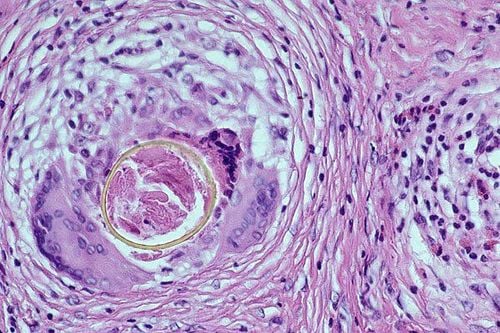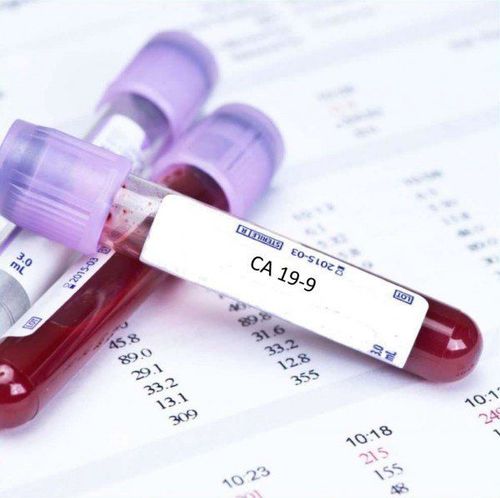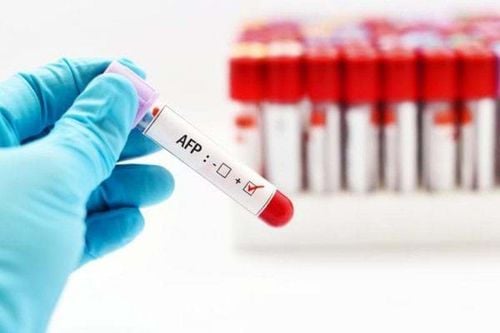This is an automatically translated article.
CA-125 is an extremely accurate marker for non-mucinous epithelial tumors of the ovary. CA-125 is elevated in more than 80% of women with ovarian cancer. This tumor marker is highly sensitive and specific for ovarian cancer and has been of great help to doctors in the diagnosis.1. What is a normal CA 125?
The normal threshold for CA 125 is 35 U/ml. In patients with ovarian cancer, CA 125 levels are often higher than normal. In addition, plasma CA 125 levels may also be increased in endometriosis, lung, breast, and colorectal cancers.2. Significance of plasma CA 125 level in ovarian cancer

Ý nghĩa mức độ CA-125 huyết tương trong ung thư buồng trứng
3. Plasma CA125 levels of some other cancers
In addition to breast cancer, the plasma CA125 level may also be elevated in some malignancies such as cancer caused by endometriosis, lung cancer, breast, colorectal, ...
Mức độ CA125 huyết tương một số bệnh ung thư khác
4. When should you do the CA-125 test?
You may be tested for CA-125 for many reasons:To monitor treatment: If you have ovarian cancer, endometrial cancer, peritoneal or fallopian tube cancer, your doctor may We may recommend CA-125 testing to monitor your condition and treatment. To screen for ovarian cancer if you are at high risk: If you have a family history of ovarian cancer or you have mutations in the BCRA1 and BCRA2 genes, your doctor may recommend a CA-125 test as a way to screen for ovarian cancer. for ovarian cancer screening. Some doctors may recommend a CA-125 test combined with a transvaginal ultrasound every 6 months for high-risk women. To check for cancer recurrence: An elevation of CA-125 may indicate that ovarian cancer recurs after treatment. CA125 levels increase in about 80% of women with ovarian cancer and increase in proportion to disease progression, tumor size, decrease to normal after surgery, increase again if recurrence; The higher the CA125 level, the worse the prognosis. CA125 levels can also be elevated in some other cancers, in some benign diseases, and in physiological states, so differential diagnosis for these conditions is essential. Ovarian cancer is the leading cause of death in women because the disease develops slowly and has unusual signs when it is at a late stage. Ovarian cancer screening is the optimal measure for early detection and effective treatment. Therefore, to meet the needs of women for gynecological cancer screening, Vinmec International Hospital currently offers a screening package and early detection of gynecological cancer, helping to detect 4 diseases early. : Cervical cancer, breast cancer, uterine cancer and ovarian cancer even if the patient has no symptoms.
The subjects who should use the Gynecological Cancer Screening and Early Detection Package include:
Female customers, over 40 years old; Customers wishing to be able to screen for breast-gynecological cancers (cervical, uterine, ovarian); Customers with high risk of cancer – especially customers with a family history of breast and gynecological cancers; Women of reproductive age, perimenopause and menopause; Women who are having symptoms of breast cancer, gynecological such as pain and lump in the breast, bleeding outside the menstrual period, abdominal pain, etc.
Please dial HOTLINE for more information or register for an appointment HERE. Download MyVinmec app to make appointments faster and to manage your bookings easily.
SEE ALSO:
CA 125: Markers of ovarian cancer Learn about cancer markers CA 72-4 Learn about cancer markers CA 19-9 Normal and abnormal values of CA 15-3: Breast cancer markers













